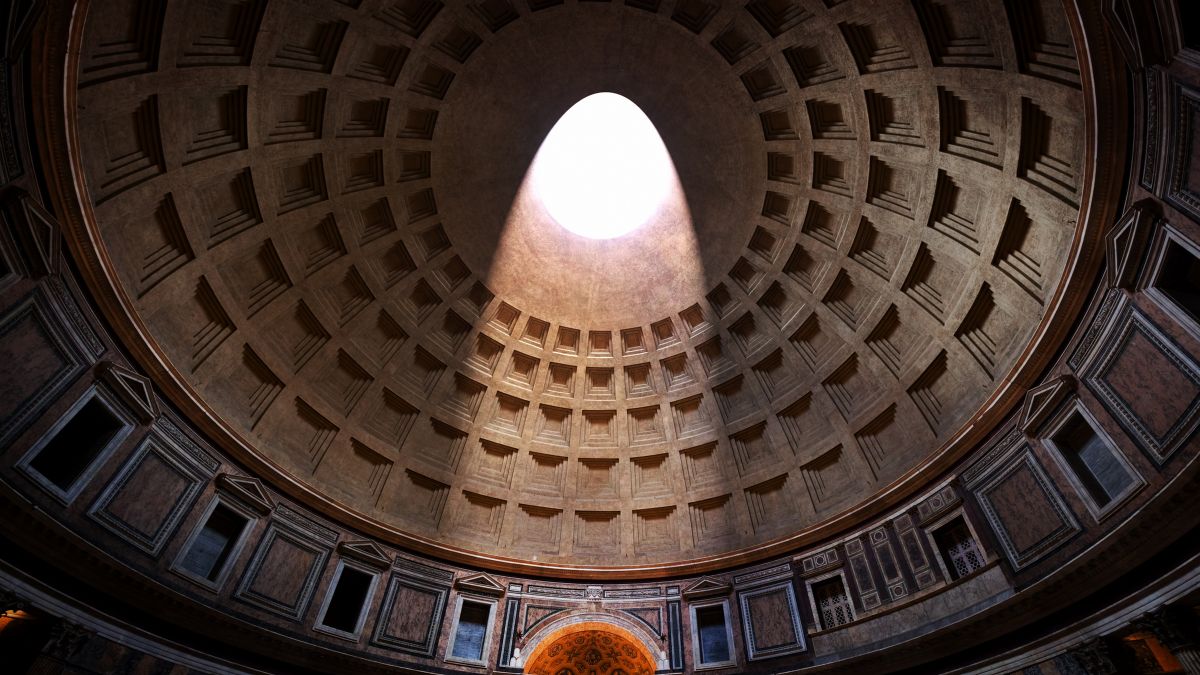He Panten de Romacommissioned by the first emperor of the Roman Empire, Augustus, and completed by the emperor Hadrian almost 2,000 years ago, is an architectural masterpiece. Its perfection allows the rain does not wet the ground, despite the enormous ass of its dome.
He Panten de Romaa name of Greek origin that means “temple of all the gods”, became a Christian church in the 7th century. It is a work that has not yet been surpassed, two millennia later: with its 43.4 meters in diameter, the same as its height, The Pantheon dome is the largest in the world built with unreinforced concrete.
One of its curiosities is its assthe nine-meter hole in its dome. Despite being huge, On rainy days the water barely reaches the ground. And when it does, puddles never form. How is it possible?
The ass of the Panten in Rome
To our modern and practical eyes, leaving a thirty-foot hole in a dome doesn’t make much sense. But the ass of the Panten Roma It fulfills two functions that are as fascinating as they are opposite.
First of all, It has a scientific function: The hole serves to reduce the enormous weight of the dome. Thanks to it, 2,000 years later, it is still the largest unreinforced concrete dome in existence.
Its second function is religious. The ass symbolizes the direct connection between Heaven and Earth, between the gods and the human being. A way to represent the divinity of the temple.
Thanks to the ass, the illumination of the Pantheon changes constantly throughout the day, as the position of the Sun varies.
When it rains, it is logical to think that the ground under the dome has to be soaked. But it is not like that, just as explains Idealist Italy.
The reason is that The shape of the dome, and its enormous height, generate a “chimney effect”: a current of air that pushes water upward. If the rain It is very intense, it breaks down the droplets into smaller ones. So, at most, only a thin curtain of water reaches the ground.
In no case does this water form puddles: The tiles have holes that communicate directly with the sewer of the city.
It is one more example of the extraordinary mastery of the architecture of Ancient Rome. 2,000 years later, not only the Pantheon’s ass is a prodigy. Bridges and aqueducts are still used, resisting the passage of time.
Get to know how we work in ComputerHoy.
Tags: Viral, Architecture, Curiosities, History

